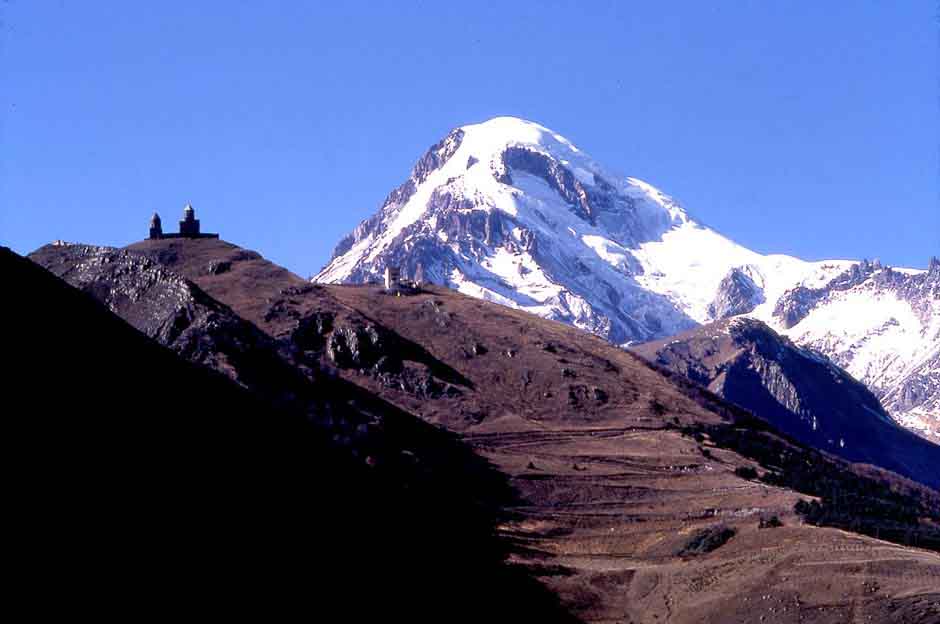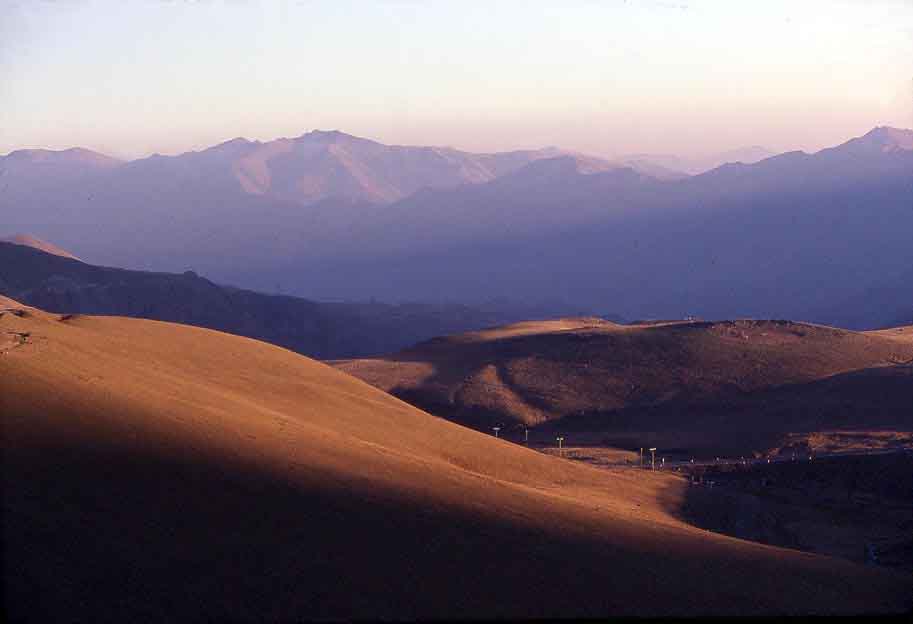Click on the pictures, some can be enlarged!
|
The Georgian Military Road Crossing the High Caucasus
May 1976, November 1980, May 1989 |
Built by the Russians in the 19th century the "Georgian Military Road," the only pass-road across the wild mountains that can be used by cars, has been celebrated in Russian poetry since the late 19th century. It is a spectacular drive at any time of the year - but most impressive during spring time, when the sheep are being driven across the snow covered mountains. On the map the Caucasus divides Europe from Asia but one soon finds that the Georgians on its southern side with their old Christian culture - five hundred years older than that of Russia or Germany - are more European than their northern neighbors. Until the early 19th century this barrier stretching between the Black Sea and the Caspian has protected the Georgians from their northern neighbors. - The oldest human remains in Eurasia - 1.8 million years old - were recently found in Dmanisi in Western Georgia, and the Georgians are convinced that this anthropos spoke Georgian, which is an insular pre-Indo-European language with no relatives that has certainly been spoken for at least 5000 years....! The original Indo-European or "Caucasian" tribes originally occupied the northern slopes of the Caucasus, the valleys of which are to this day inhabited by a colorful and confounding mixture of over a hundred, ethnically differing tribes, languages, and religions.
|
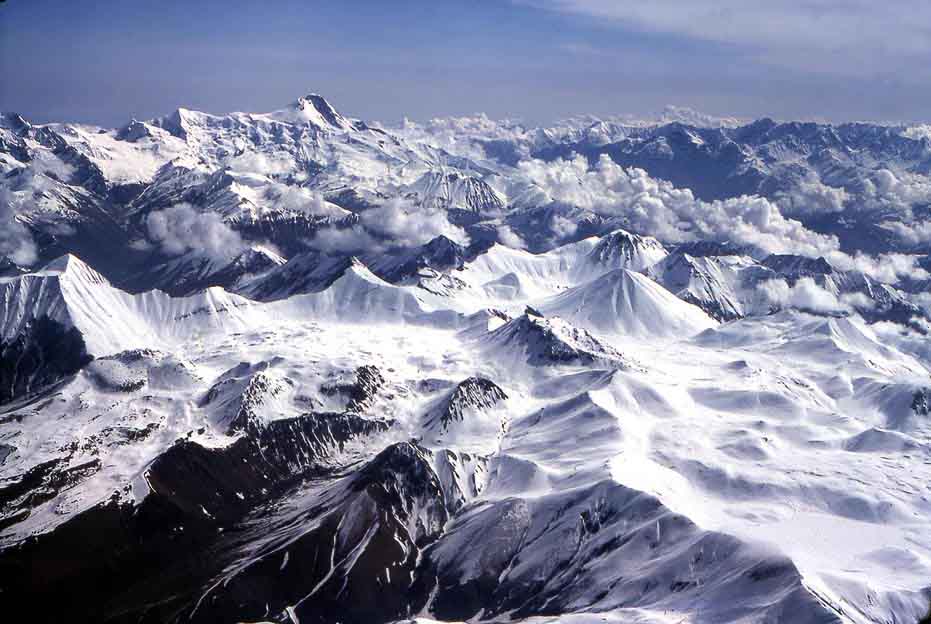
The icy peaks of the Eastern Great Caucasus. The highest peak is Mt. Kazbeg, just to its right is the Black Aragvi Valley leading south. The Georgian Military Road climbs along the river to Djvari Pass. This picture was surreptitiously taken in June 1976 on an early Aeroflot flight from Tbilisi to Moscow - a highly illegal photo . |
May 28, 1976, by Taxi with Peter Grigoriev and Paul Robinson
|
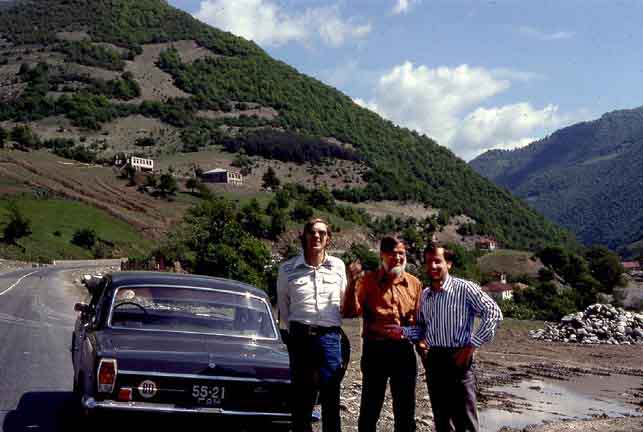
After a conference in Tbilisi Paul Robinson from Las Alamos, Peter Grigoriev from Moscow and I shared a taxi to Kazbegi. On this first visit to Georgia in 1976 I had no friends in Tbilisi, and the Georgian conference hosts were shocked by my impudent request to take me there. |
|
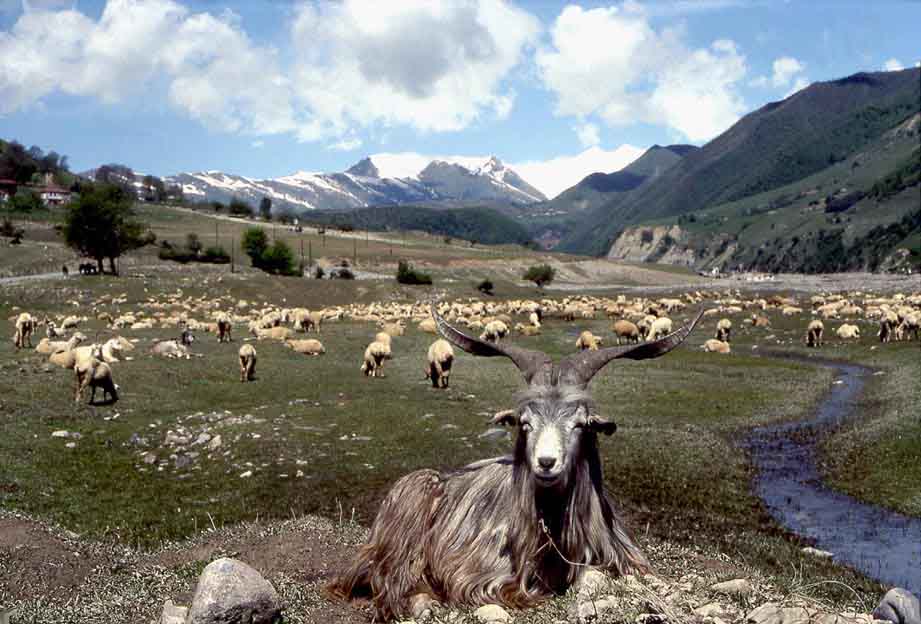
In May-June a million sheep make their bi-annual trek across the mountains. They are led by goats like this one, and driven by shepherds on horses. |
|
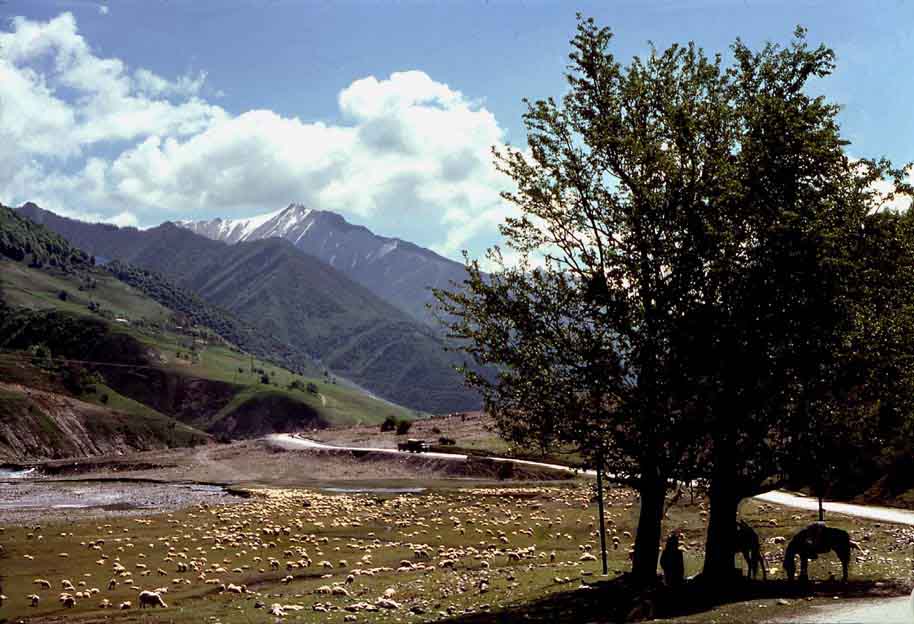
A flock of sheep and their herders. |
|

The houses of Mleti and one of the old defense towers. |
|
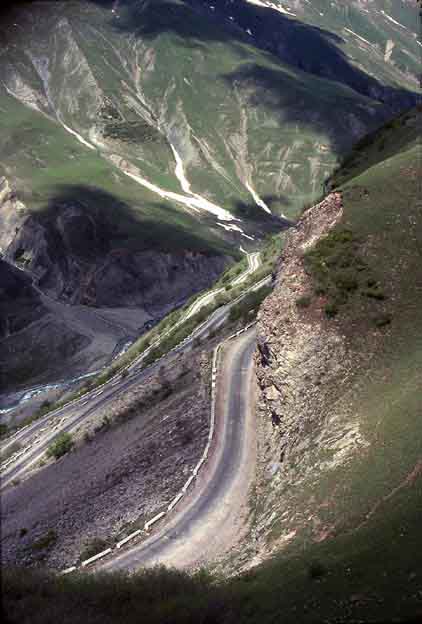
Behind the village of Mleti the road climbs more than 1000 meters to Djvari Pass, the Pass of the Cross in a series of hair-raising switch-back curves. |
|
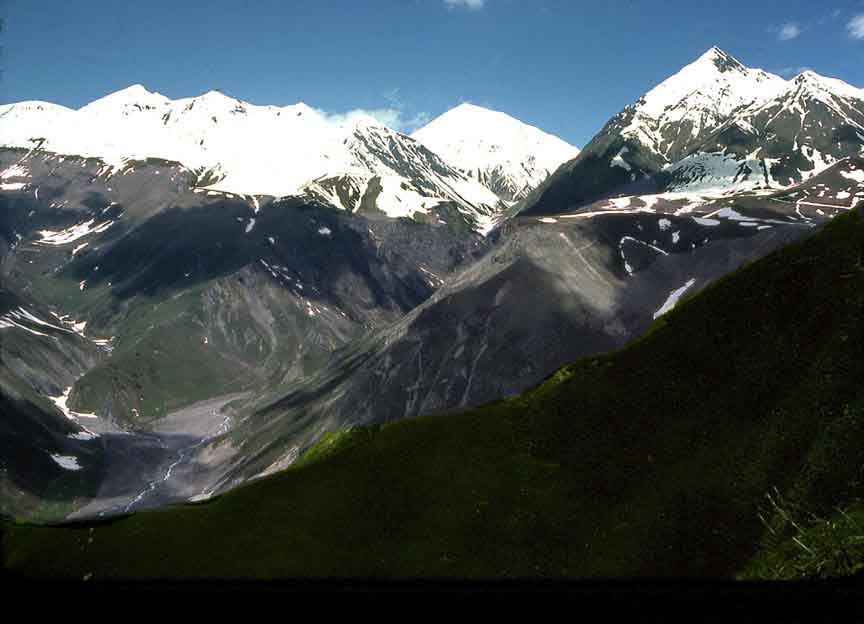
The upper valley just below the pass . |
|
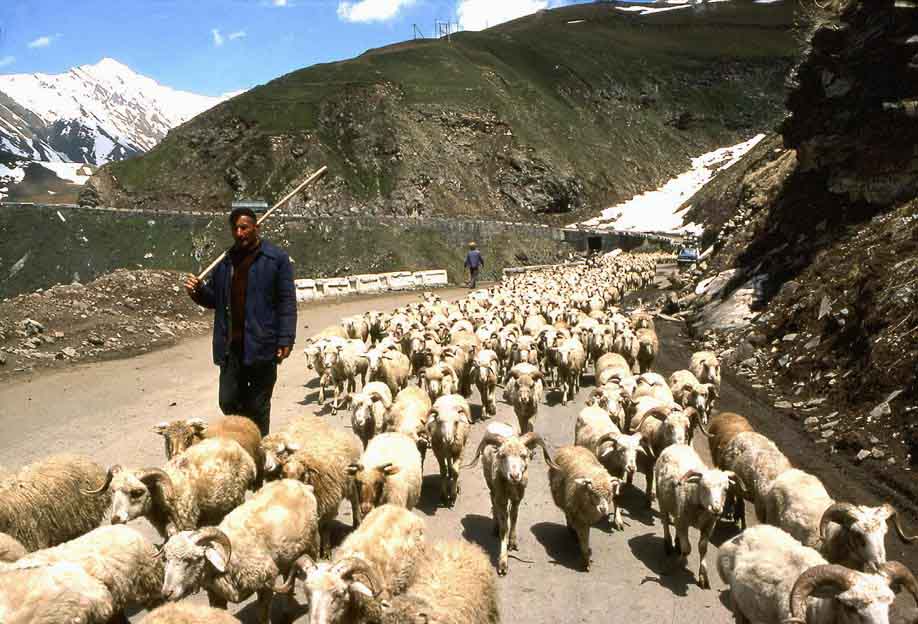
Progress became very slow as more sheep crowded the road . |
|
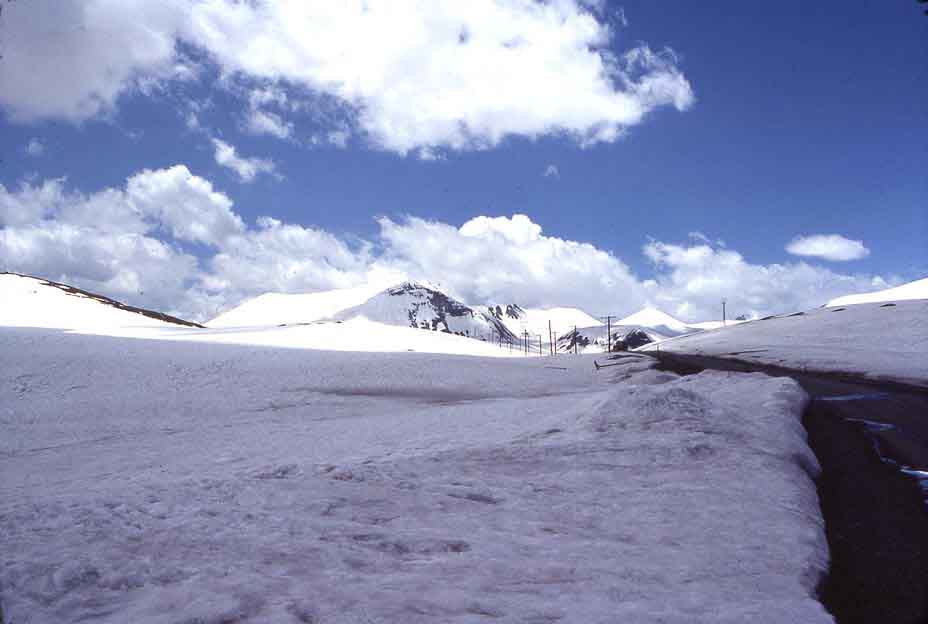
Djvari Pass deep in snow on the last day of May. |
|
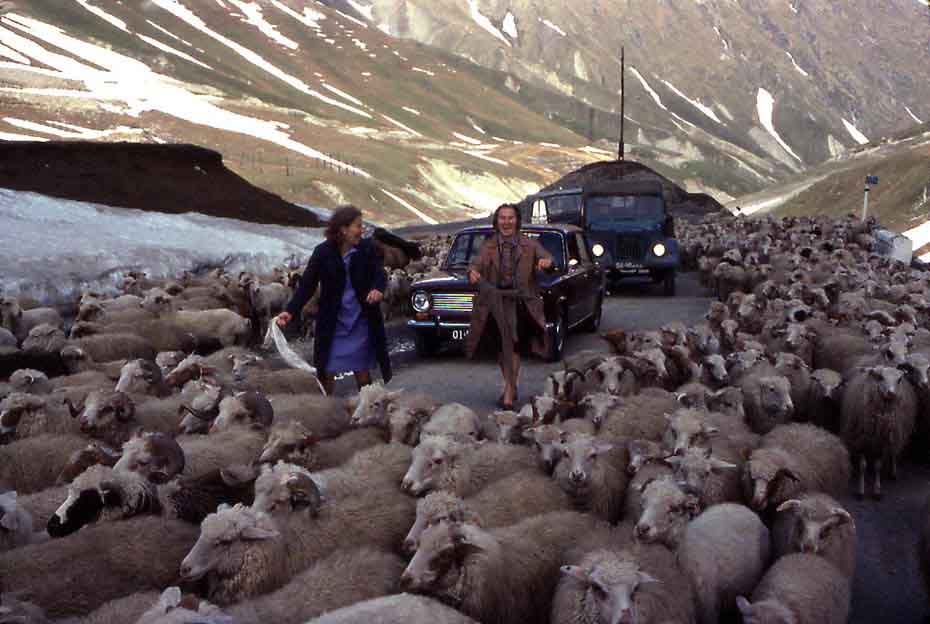
Two elegant ladies from Tbilisi parting the sea of dumb sheep. We had to do the same with a broom the taxi driver kept in his car for this purpose. |
|
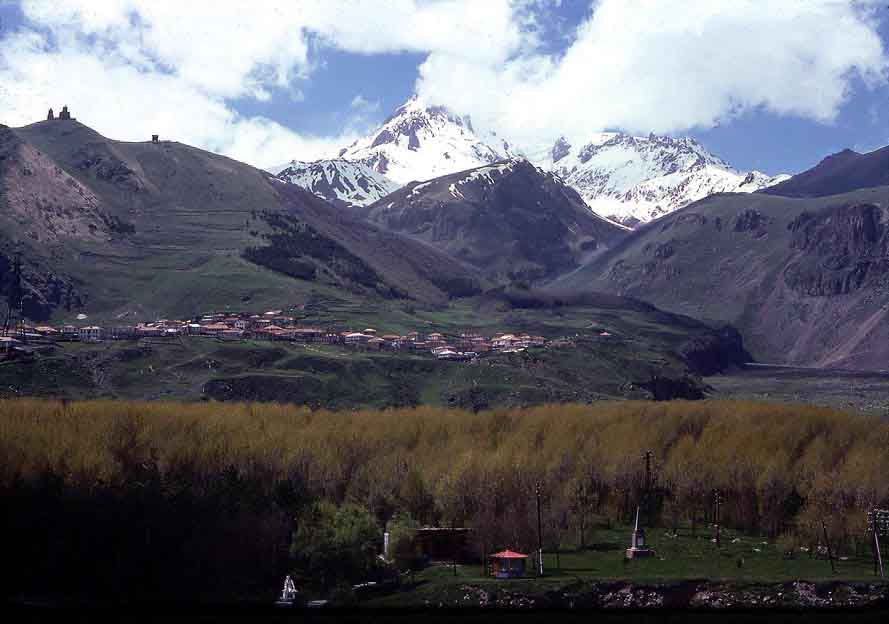
Mt. Kazbeg from the "restaurant" in the village of Kazbegi. On the hill to the left is Mtatsminda Zamemba Kazbegi, the church of the Trinity, one of the landmarks of Georgia. I persuaded my friends to hike to the church. |
|
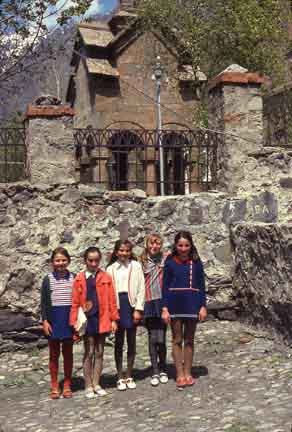
School children in Kazbegi. One child has a Russian mother, the others are Georgians. Notice their elegant clothes! Their mothers walked around on fashionable platform shoes in the gutted streets of the village where little high-legged black pigs wallowed. |
|

The Mountain and the Ortisferi Glacier from the Mtatsminda Zameba |
November 1980 with Merab, Sophiko, Barbara, and Cornelius
On my second visit in November 1980 Merab Djibladze drove Sophiko, Cornelius, Barbara, and me in his beloved Zhiguli to Kazbegi. The clouds in the lower Aragvi Valley soon cleared as we reached altitude. It became a most glorious day. Sophiko told old Georgian tales about the places we passed or taught Cornelius Georgian in the crammed back-seat, and Merab stopped on the merest utterance that I wanted to take a picture.
|
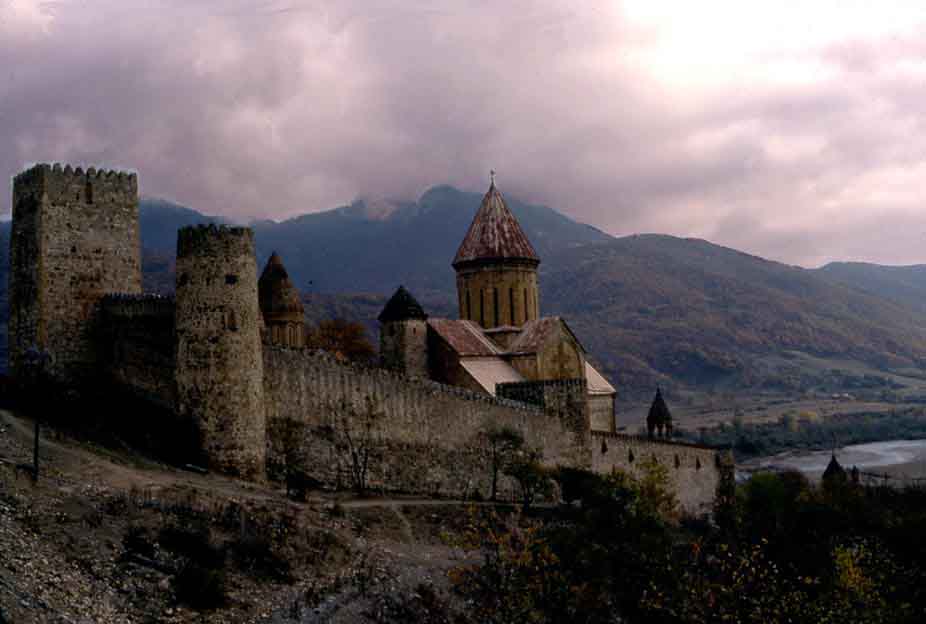
The Castle of Anauri, which had been owned by an Osseti, the last left over Ostrogoths in these valleys from times before their tribe migrated to Spain. Sophie knew a mythical tale of the owner stealing the wife of his Georgian neighbor and braving the siege of her cuckolded husband. To atone for this adultery the Ossi built a second larger church inside his keep. |
|
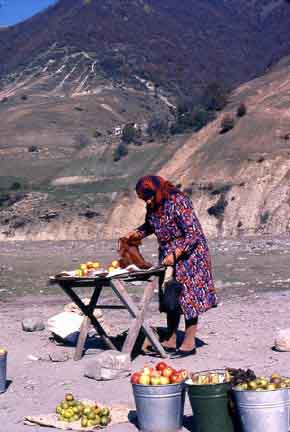
|
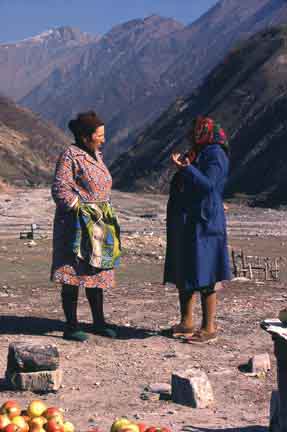
|
|
These women are Khevsures, a Georgian tribe as one can see from their gestures and talkative nature. The woman on the left holds a fruit-sheet made of tangy, wild sour-plums, which Merab bought for us. |
|
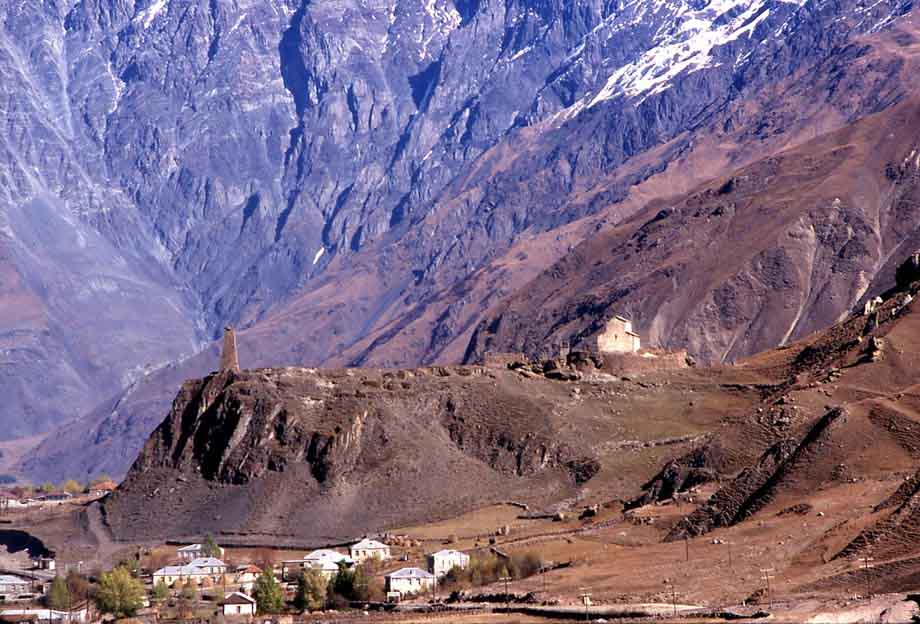
On the northern side of Djvari Pass lies the village of Sioni Kazbegi with a very old church and a defense tower nestling in a majestic amphitheater of mountains |
|
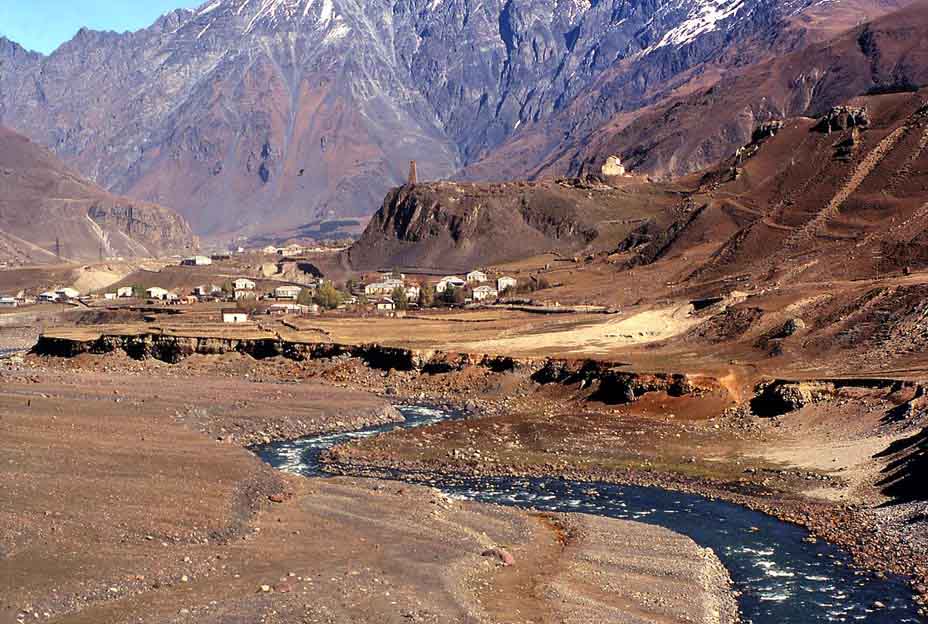
The road follows the Terek River Valley north into the Russian plains. The village is another Georgian landmark. |
|
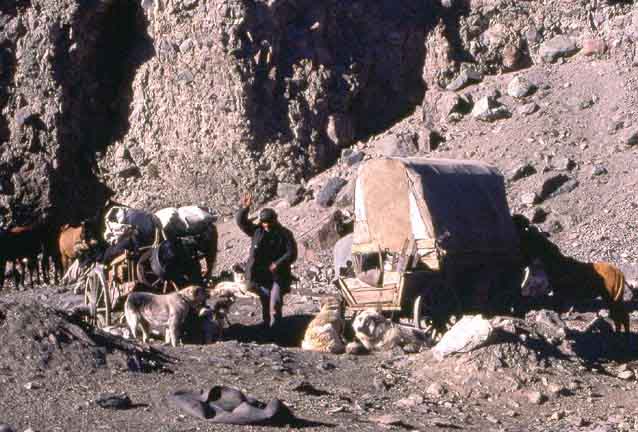
There were fewer sheep this time. A shepherd and his fearful dogs in a camp by the wayside. |
|
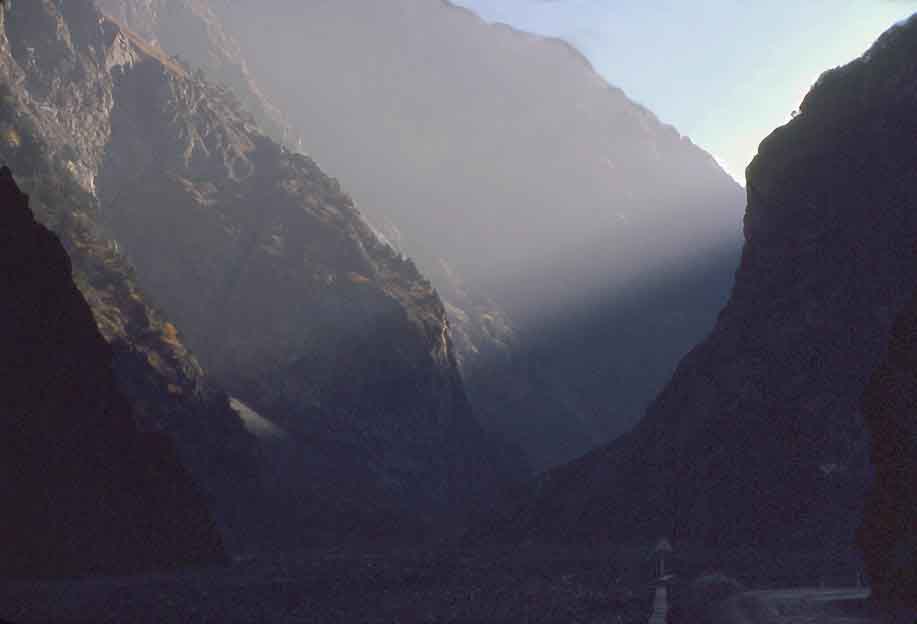
Just before exiting the mountains the Terek tunnels through the deep Darian Gorge, the "Gate of the Alani." For millennia tribes and armies have moved through these narrows, the border between Georgia and Russia. A barrier-gate and a Russian military post prevented Merab from continuing to Vladikavkas-Ordjonikidze even in 1980. |
|
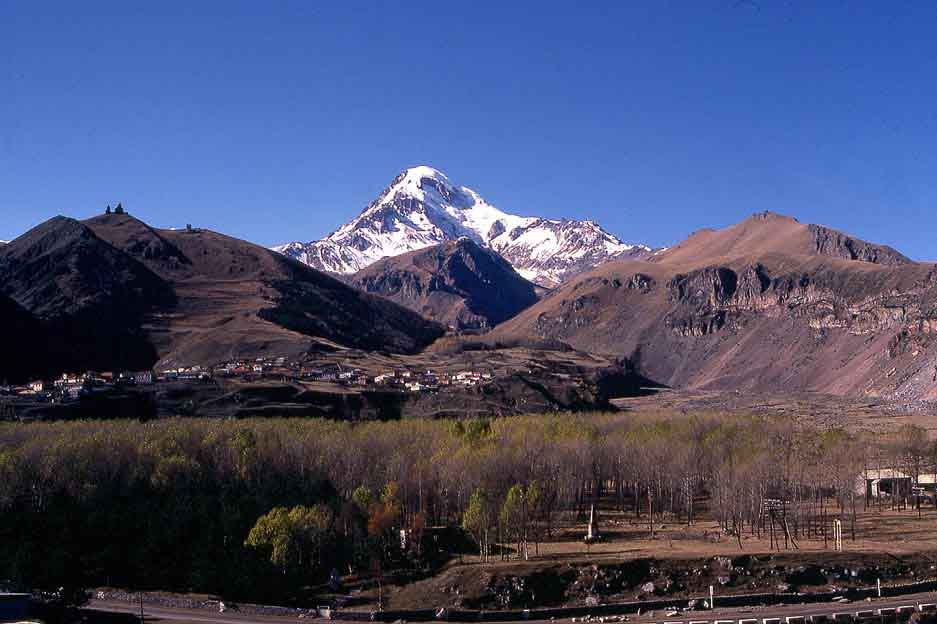
Cloud-free in November Mt. Kazbeg rises into the blue sky. |
|
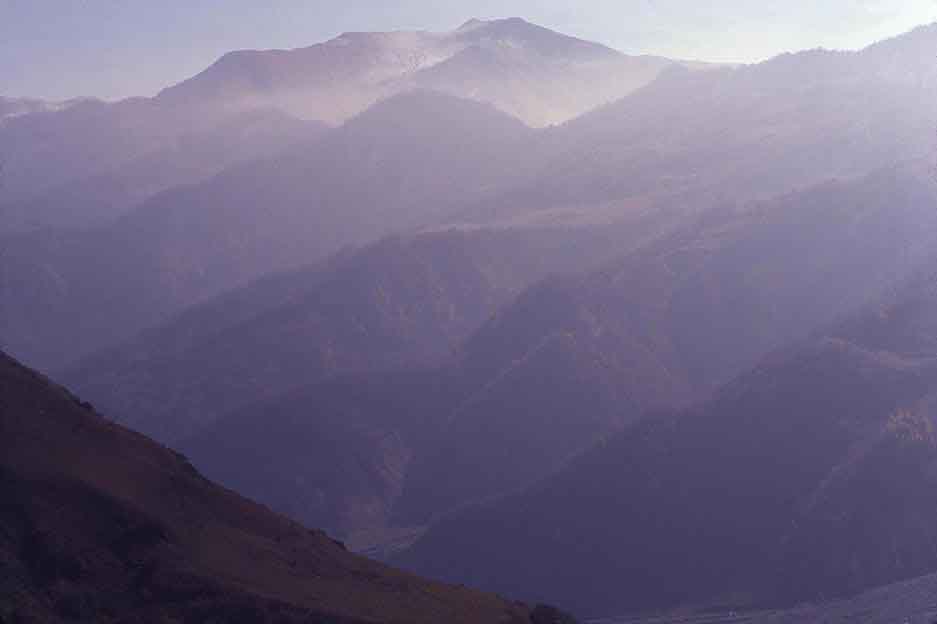
It became a long day. The Georgian mountains in the evening light on the way home . |
|
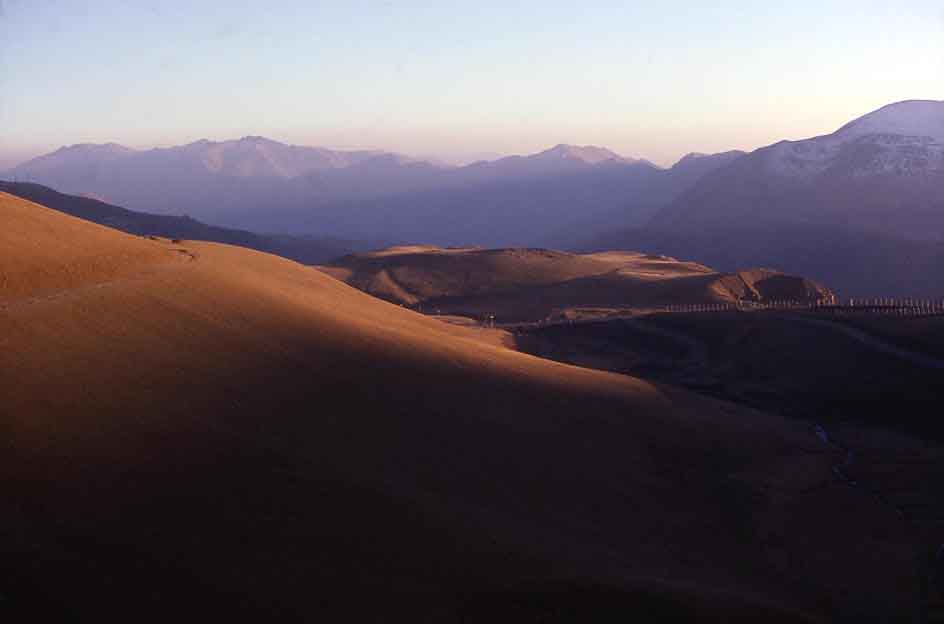
Imperturbable Merab braked for another two photos of the waning light skimming the hills south of the pass. |
May 1989 with Merab, Cornelius and the Shcherbakovs
On my last visit to Georgia, Moscow, and Central Asia, Cornelius came along on invitation of the then still Soviet Academy of Sciences to present his Berkeley research on sickle-cell anemia. The Soviet Union was tottering on the verge of disintegration, and we talked politics from early morning to late night, it was a most strenuous and exciting time. Tbilisi was in uproar after the massacre of 20 young women a week earlier. For the first time the Academy, fearing for our safety in Georgia, sent a chaperon along, Ivan Shcherbakov - the son of one of Stalin's closest collaborators, whom he murdered in the fifties - and his wife, long-standing friends of mine and Merab's. As a special treat Merab drove the four of us once more to Kazbegi. This time we all - including Merab - hiked to Mtatsminda Zameba.
|
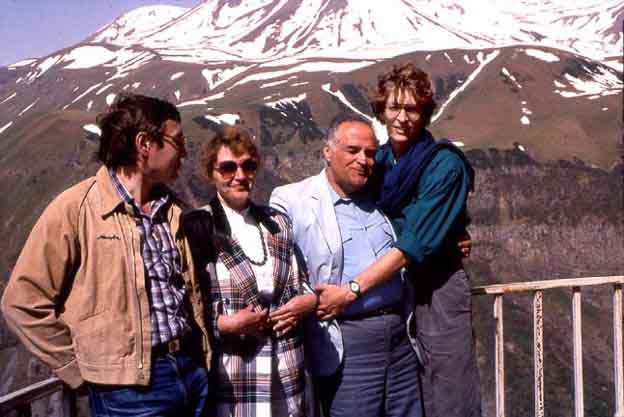
The Shcherbakovs, Merab megobari with closed eyes in the arms of his best friend Corneliusi |
|
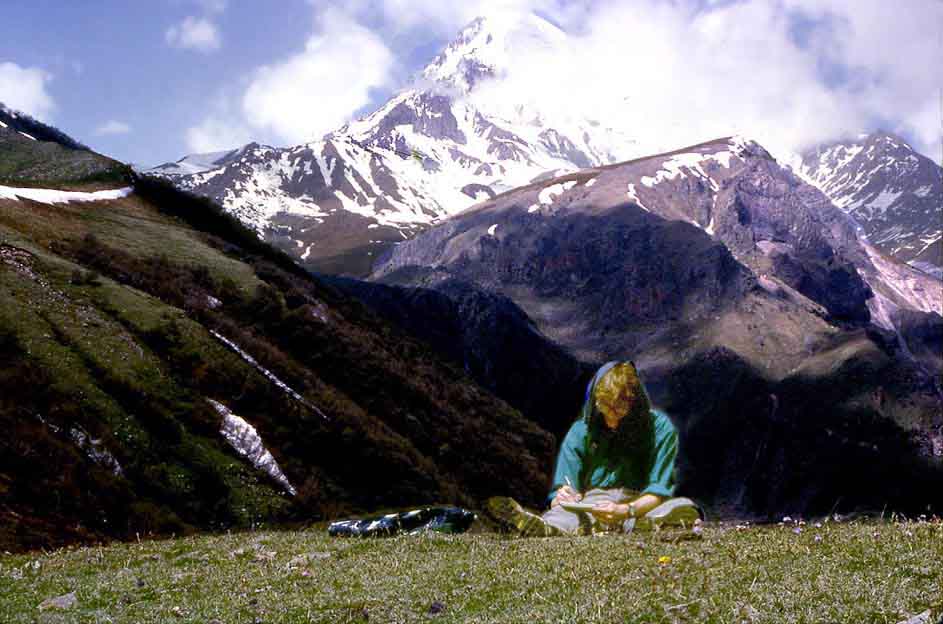
Cornelius on the meadow below the Mountain drawing..... |
|
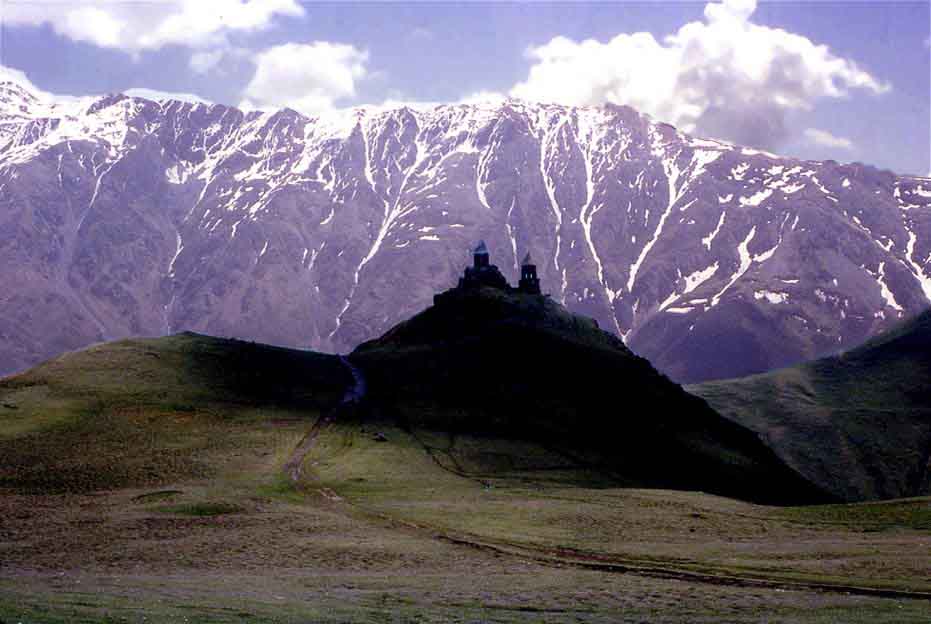
....the Church of Mtatsminda Zameba |





















